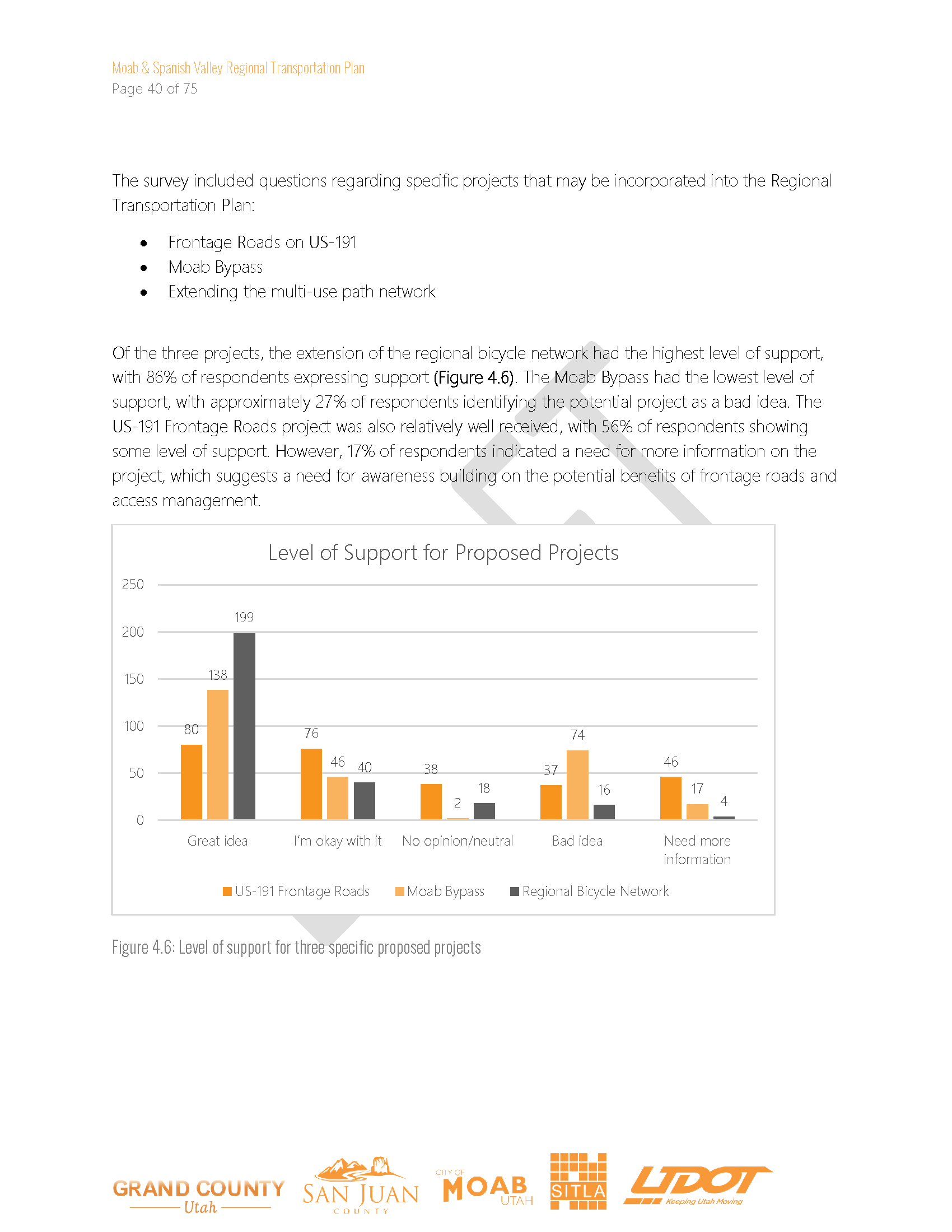Grand and Moab have picked the losing side of the bypass argument
There is this effect in politics where, if elites or elected leaders or others with a position of posture take a position, that position becomes more popular.
There is obviously interplay; elite opinion is shaped by popular opinion, as well. My only point is that it goes both ways.
The Grand County Commission and Moab City Council have debated back and forth in recent months about the Moab Bypass, which would route through traffic off of Main Street and, somehow, around the city. Every time it comes up, I feel a bit more alienated in my opinion on the matter.
To me, the net effect of forcing the Moab Bypass out of the conversation — of trying to make it simply never happen — is much more negative than the net effect of literally just continuing to discuss it.
I was at a party the other day with a guy who lives in Mountain View and is fully sold on the idea that even talking about the bypass is kind of offensive. His basic premise is that there is this very organized opposition to the bypass by people who would be directly affected by it, and that should be respected.
He also had grievances about how businesses pushed in the 1980s to keep Main Street as the highway, and he said something about how Center Street used to actually be the highway or something — it was a bit incoherent, but we had both been drinking.
Regardless, sober, this guy is opposed to the bypass, full stop. He has allies on the Moab City Council on the issue in the form of Rani Derasary, Kalen Jones (who I believe lives in the Mountain View neighborhood), and Tawny Guzman-Newton.
He also has an ally in six of the seven members of the Grand County Commission. All of them, save for Commissioner Evan Clapper, voted last week to take a position opposing further consideration of a bypass.
The thing is: There is no one group that stands to be the loser on the bypass. Mountain View was the neighborhood most proximate to the proposed alignment in the 2018 study, and I’m sure there have been plans previous that proposed a similar alignment.
Regardless, what Clapper said on this was correct: The city and county can take a position against building a bypass aligned next to Mountain View without jeopardizing the whole conversation of managing Moab’s through traffic via bypass.
The thing that I cannot get over is that this is not a conversation about any specific bypass. For the people in Mountain View, that is the only way they can see it because they believe they stand to lose so much if the thing gets built along the southwest rim.
The whole conceit of the bypass is that it is ill-defined. There is no bypass; that’s the point. It’s an idea. We can draw lines all over the map and talk about what would happen if we tried to build a bypass here or there; until actual plans are drawn, there is no plan for a bypass.
There’s a part of the regional transportation plan that shows the results of a survey of 277 people asked about their support for each of three transportation infrastructure projects.

For each of the projects, the number of people who said it was a “great idea” outnumbered the number of people who said it was a “bad idea.” There were also options for “I’m okay with it,” no opinion, and “need more information.”
The plan claims that frontage roads were “relatively well received” despite them having the fewest number of supporters while the bypass “had the lowest level of support.” They cited the fact that it had the highest opposition as the reason.
Reading this passage is just one of the many parts of this bypass discussion that makes me feel like I’m out on a ledge in my opinions because there seems to be some kind of reality distortion field either afflicting everyone else or me.
It is true that the bypass has the greatest number of detractors, but it is also true that it is the most polarizing issue of the three surveyed. Two people of the 277 asked were neutral on it; 17 others (6%) said they needed more information.
On top of that, frontage roads were not “relatively well received” when juxtaposed with the other two projects. It had the fewest total people on the positive side of the issue; 156 said they were at least okay with it, while 184 and 239 were on the positive side of the bypass and regional bicycle network, respectively.
Depending on how you look at the net ratings, the bypass is either equally popular as or more popular than frontage roads. The frontage roads had slightly more people on the positive side of the issue, but the bypass had many more people saying it was a “great idea” rather than being merely “okay with it.”
That’s pretty far into the weeds, but the point is this: The upside of the bypass seems totally ignored in the conversation about it. There are way more people saying it’s a “great idea” than saying it’s a “bad idea,” yet our elected leaders are treating it like it’s simply a bad idea — so bad that it’s not worth discussing or cursorily planning for.
It’s simply not the case. The bypass is good for urban planning; it is popular among local residents; it is popular with the state, which is all but begging to have it happen; and it is an alternative to allowing Main Street to further deteriorate.
Elected leaders need to let go of their egos and also listen to the constituents and colleagues and who do not live in Mountain View, not just the people who do — like Kalen Jones and Christina Sloan.